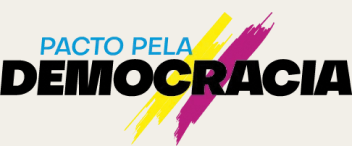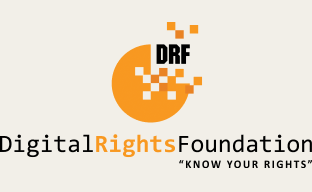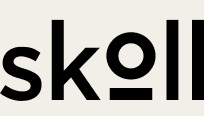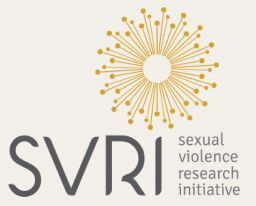Chambal Media is India’s first rural media network producing local language content with and for rural audiences. With a strong network of rural and urban journalists, Chambal reporters tell stories that are often overlooked by mainstream media. What distinguishes them from the rest is their story telling through a feminist gaze and by representatives of marginalized communities. Chambal’s storytellers and filmmakers of rural India narrate stories that are often personal and from their communities.
Meedan has been working with Chambal Media for the past three years in different projects. During the Covid pandemic, Chambal and the Check Global team of Meedan have collaborated to bring out stories on the impact of the pandemic on women with a focus on surveillance and technology. More recently we worked with Chambal on delivering digital security training for rural journalists.
This year as Chambal completes 20 years of groundbreaking journalism, we’d like to appreciate their enriching contribution to the Indian media ecosystem and share their insights on running a feminist independent newsroom.
1. The context of news media today is different from the time when Chambal was launched. What makes Chambal Media distinct in this media landscape?
What makes Chambal unique amidst many competitive media houses or newsrooms is our team.
Chambal Media is a digital media social enterprise founded in 2015 by a diverse team of rural and urban media practitioners, with over 20 years of experience producing local language content, especially with and for rural audiences. Diversity is our neev, our foundation. It was founded with the mission to bring into the digital/internet revolution in India the perspectives and involvement of women on the margins.
Rural women are embedded as journalists, researchers, producers, filmmakers and editors, changing the way we think about insights and content for and about rural audiences. Our reportage is led by women representatives of marginalised and underserved communities.For most of our reporters, the stories they cover, be it about the illegal sand mafia, access to water or the condition of roads - most of these stories are of their own or neighbourhood communities.
For the past two decades through our flagship, Khabar Lahariya, we have been trying to redefine news and newsmakers. Through our intersectional feminist model and grassroots storytelling, we want to attempt to change the way stories of rural India are told.
2. As a group that works with women and technology, what are some of the new challenges that you have come across in the last few years? How do you mitigate these challenges?
Recently, we conducted a media training programme for young rural boys and girls from Bodhgaya, Bihar. Out of the 21 students who attended the 2-day residential training, 15 were girls and 6 boys. Our academy trainer, Suneeta pointed out that every girl who attended that class was accompanied by a caretaker(parents didnt let them travel alone for the training) whereas the boys were free to come alone. The bigger irony was that all the boys were recording the session using their mobile phones whereas none of the girls had one. This shows how most girls in rural India are not given the opportunity to use mobile phones or explore the digital world. We had witnessed this in 2015 when we were switching to digital from print and it's unfortunate that the situation prevails in many rural areas even today.
The switch from print to digital was not easy even for our team of reporters - some of them were using a smartphone for the first time in their life. Training, individual mentoring and a strong ecosystem of support enabled this transition and today they confidently record videos and anchor links, operate the camera and navige social media.
A woman's need for a phone is also questioned and often looked at with suspicion. Our team often hears from women: “If we get a missed call from an unknown number, we are blamed for it”. “My younger brother has a mobile phone, I don't even have the basic keypad mobile phone”. “When I asked for my mobile phone, they complained to my mother-in-law - ‘your daughter-in-law is asking for a mobile phone”. Patriarchy and gender bias/ hindrance when it comes to technology is something we are still fighting to overcome.
Partnering with organizations, making informative and inspiring videos, and highlighting this even in our Chambal Academy curriculum- are some measures we have taken to overcome these challenges. Our team is vocal about these gaps in forums that they participate in, online and offline. The Academy is our attempt to help bridge this gendered digital divide, not just so that women join our media network or become storytellers but also to get them thinking and talking about gender, caste and patriarchy.
3. You recently launched the Chambal Academy for training rural journalists. What is the vision behind this and what do you intend to achieve?
Recently during an oral history documentation workshop conducted by Chambal Academy, we trained a group of Dalit and Adivasi students from Bihar to conduct interviews. They were given training to frame, and ask questions and were asked to practice it in the training locality. During the exercise, one girl came running to us post her interview and said, "I asked a question to someone older than myself for the first time. From childhood, we are always told not to question elders. Hence I always feared to ask even a simple question to someone but today I interviewed someone and I felt great.”
During a weekly Zoom discussion for students with academy trainers, the conversation was on the ‘Gender and patriarchy’, that week’s chapter in the mobile journalism course. And a student from Chhattisgarh, a state in India, shared how she related to the content she learned. She was a topper in Kabadi (sports) but her upper caste trainer denied her a selection due to her Dalit identity. Through the curriculum, our student was able to voice the discrimination she faced. And she wrote an article about her experience for our website.
At Chambal Academy, our vision is to empower women and girls in rural India and train them to be active and conscious digital participants and storytellers through our courses, tool kits and training. The impact is never measured with numbers but with changes like this which we witness within our students, and with each batch we feel closer to our vision.
4. How does Chambal Media define feminist content? Can you give some examples of feminist content produced by Chambal Media?
For Chambal Media, in our films, podcasts, animation or news stories, the female gaze assures unique perspectives which are often missed by mainstream media. We make sure voices of marginalized communities are an integral part of all our media products. Even while dealing with stories of crime, violence, migration, poverty we make sure our stories are done with empathy not sympathy. A good example for this our news coverage while we covered the Hathras rape case. You can read our take on the story here. When the mainstream media swamped the victim's family with questions and cameras Khabar Lahariya decided to report on the insensitivity of the media and police.
We try to break the stereotyping in the representation of women, transgender community or rural person in our videos/ photographs. We are very conscious about the representation of a ‘good’ ‘empowered’ woman/ girl in the media. In fact we made a video for a feminst network on this theme. This animation film Good Girl, Bad Girl–Who’s that Girl? talks about the image of an ‘ideal girl’ that we are surrounded by everywhere, all the time. It highlights that the ‘ideal girl’ constructed by different sections of society doesn’t provide girls with the agency to carve their paths. Promoted heavily by popular media, this image is deeply seeped into our minds, influencing our personalities and decision-making.
Another example of this female gaze is an inhouse documentary film City Girls. This film is an intimate portrayal of two young girls from small towns of India now living in Delhi. The film attempts to deconstruct the image of ‘the city’ and what it means for a young woman brought up in an 'elsewhere' she's longed to escape from all her life.
5. You have completed 20 years of work this year. This is a huge achievement for an independent media group. Can you share a few mantras for other independent media groups in the region?
In the last twenty years, we have worked with our mind and heart, keeping our vision close- incorporating a rural feminist lens, priortising voices of marginalised communities and practicing impartial grassroots journalism. The impact of this grassroots media revolution has been the rise of a new generation of strong women leaders and communicators from the heart of rural India, reporting in the local language and multiple regional dialects but with stories that speak to the world. Diversity and inclusion are the cornerstones of Chambal Media, built into the DNA of the organisation. Our all-women team have varied backgrounds, a mix of literate and neo-literate women who traverse the caste and class differences and work across reporting, production, editing and social media verticals. What makes Khabar Lahariya unique is not just its journalists – women from Dalit, tribal, Muslim and other backward castes – but also its groundbreaking rural journalism that has won it multiple awards over the last many years. Over the years, in a rapidly changing media landscape, we have established newsrooms in some of the most media-dark and underdeveloped regions in the north Indian belt. But along with our growth we wanted to share our knowledge with many more and hence we established our new vertical Chambal Academy. In its 2 decades (and counting!) history, over 500 women have been trained offline, via a high-touch, intensive training model, in digital storytelling and journalism by Chambal Media and Khabar Lahariya. Chambal Academy seeks to build on, amplify and accelerate this impact, by training and equipping rural women & girls to engage in the digital public and be storytellers and catalysts for change.
We collaborated with 53 partner organizations worldwide to design and carry out our 2024 elections projects. We extend special gratitude to our lead partners in Brazil, Mexico and Pakistan, whose work we highlight in this essay.



The 2024 elections projects featured in here would not have been possible without the generous support of these funders.









